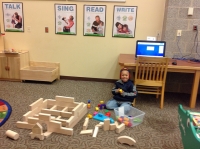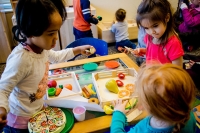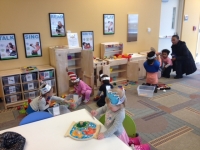Ready 2 Read Centers
Prince George's County Memorial Library System, Md.
Innovation Synopsis
Prince Georges County Memorial Library System has or will install Ready 2 Read Centers in ten branches. Ready 2 Read Centers are interactive early learning centers for children 0-5 and their caregivers. The centers are designed to help children enter kindergarten ready to learn, read and succeed.
Challenge/Opportunity
Gaps still exists between the children who have access to early literacy activities and those who do not. Access to early literacy activities has been listed as a possible reason children, without formal daycare or below the poverty line, who speak English as a second language or of single parents achieve far worse than other children. Prince George’s County, Maryland is the most diverse county in the state of Maryland. The disparities in school achievement are evident. According to the 2014 Maryland State School Assessment, there is more than a 10 percentage point difference between African American children, Hispanic children and White and Asian children in elementary school achievement. Prince George’s County Memorial Library System wants to close that gap.
Key Elements of Innovation
The implementation of Ready 2 Read Centers was a collaboration between five departments within the library system. Importance of play was reinforced with staff members as a mission of the library. Once we reiterated this initiative was not just for children to play but was important in educating parents in raising a reader, the staff was invested. Incorporating the curriculum from Public Library Association (PLA) and Association for Library Service to Children (ALSC) on Every Child Ready to Read, in Story times, parent learning parties and Ready 2 Read centers, will help close the education gap in Prince George’s County.
Achieved Outcomes
Maryland school students take assessment tests annually. We anticipate seeing the achievement gap close between races and socio economic levels in the next three to five years. Our data consultant will measure the difference in how families use their library cards before being introduced to the Ready 2 Ready centers along with all early literacy activities through the time the children are in third grade. We are also considering monitoring the high school dropout rate. In the next 15 to 18 years, it is our hope to see a decline in the high school drop out rate as well



